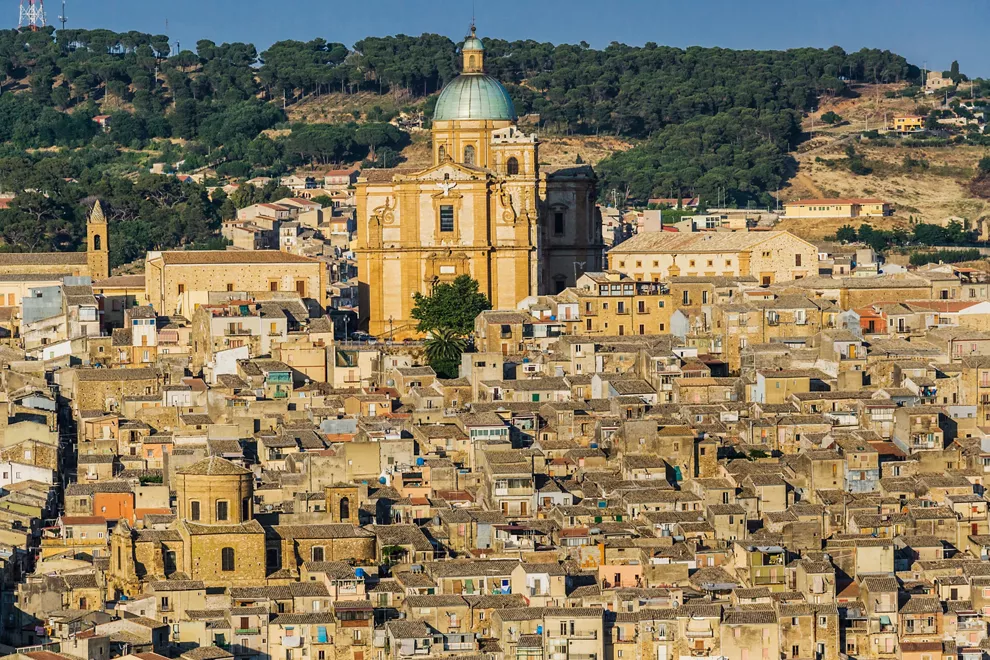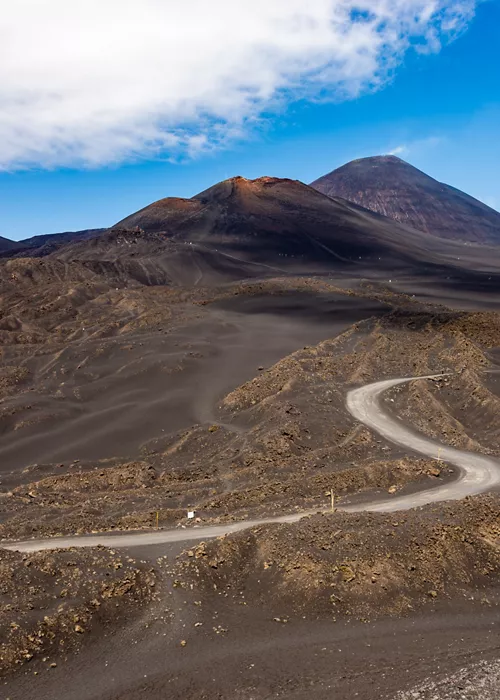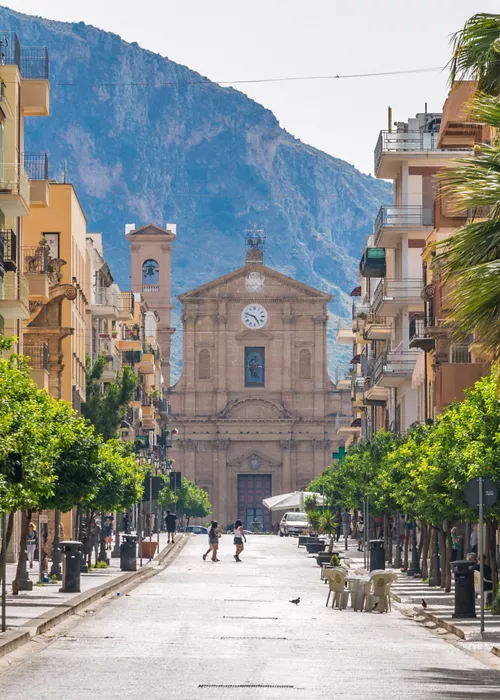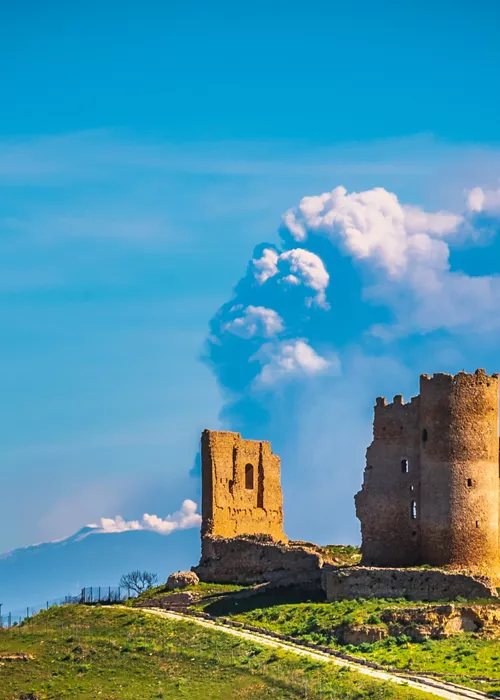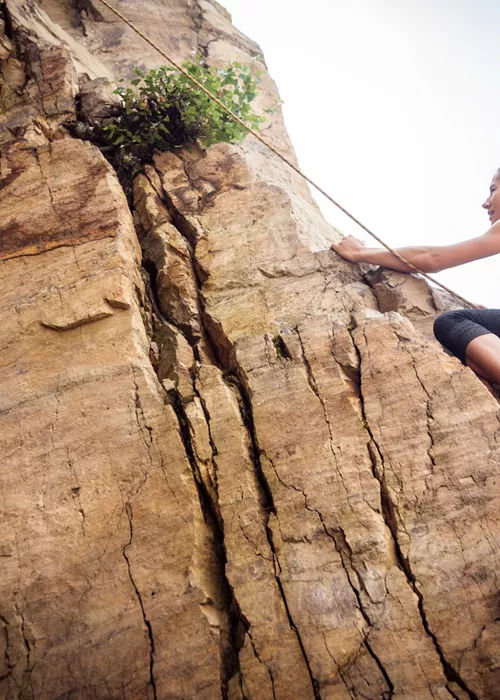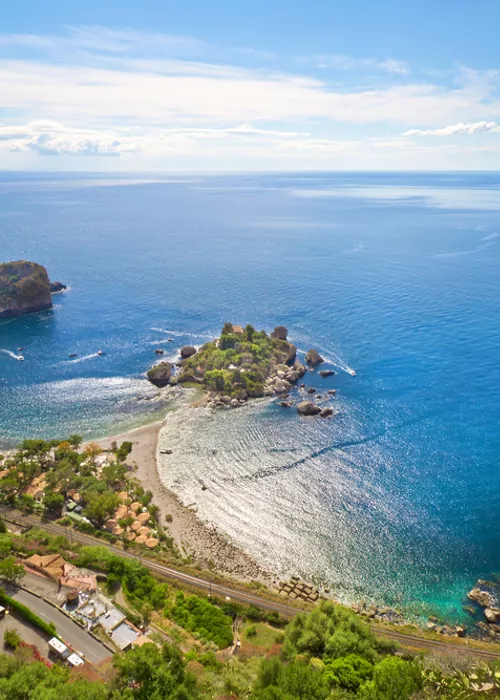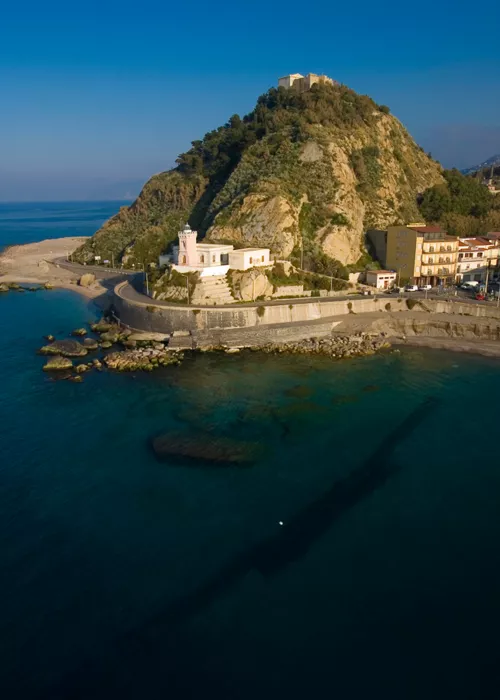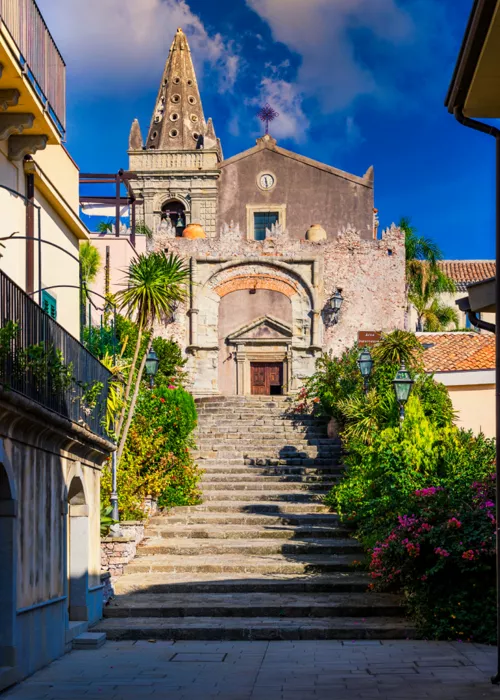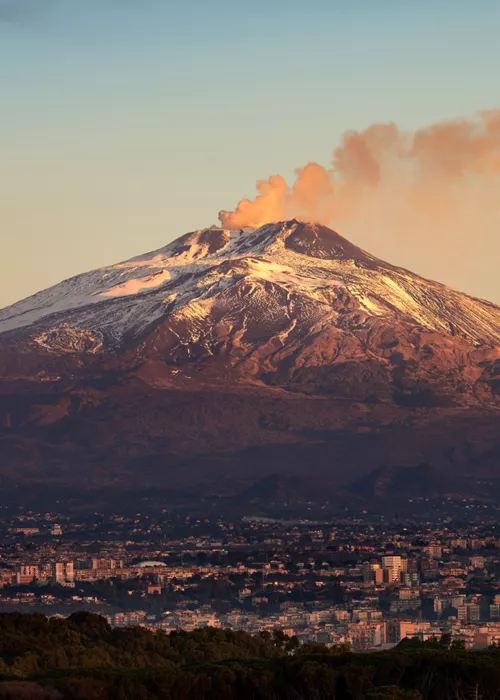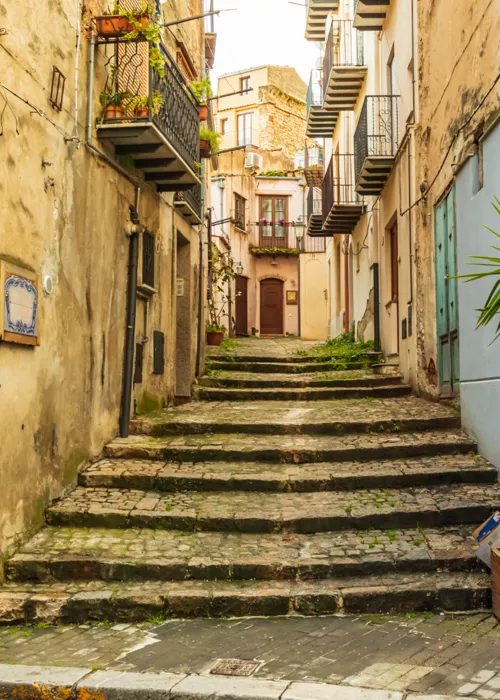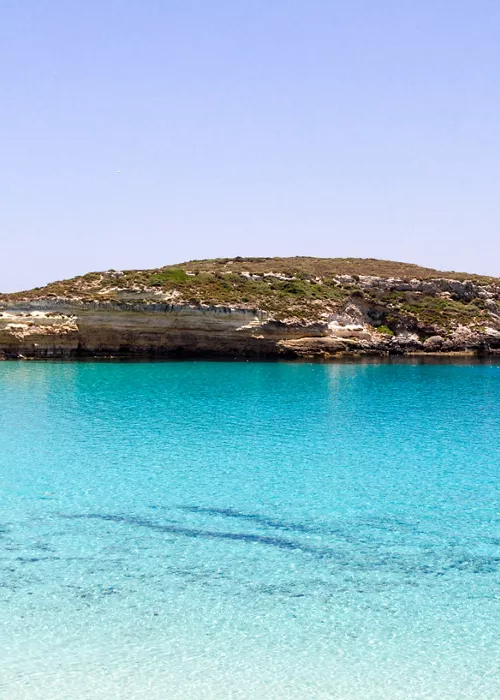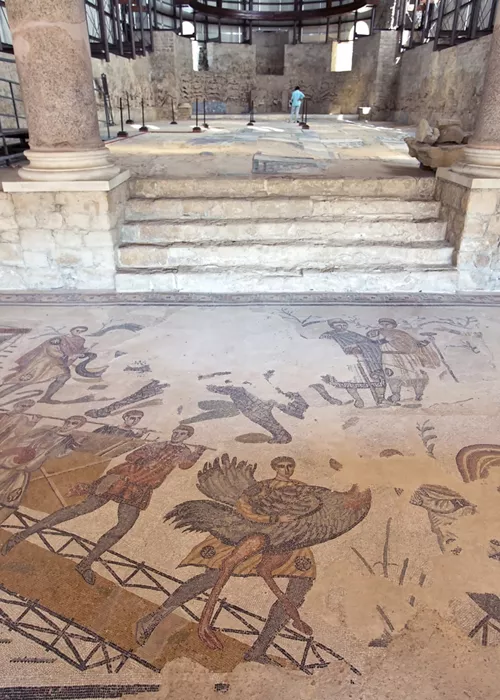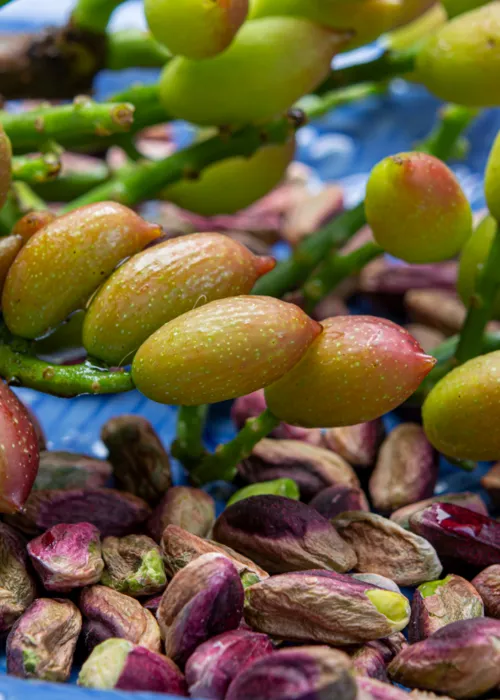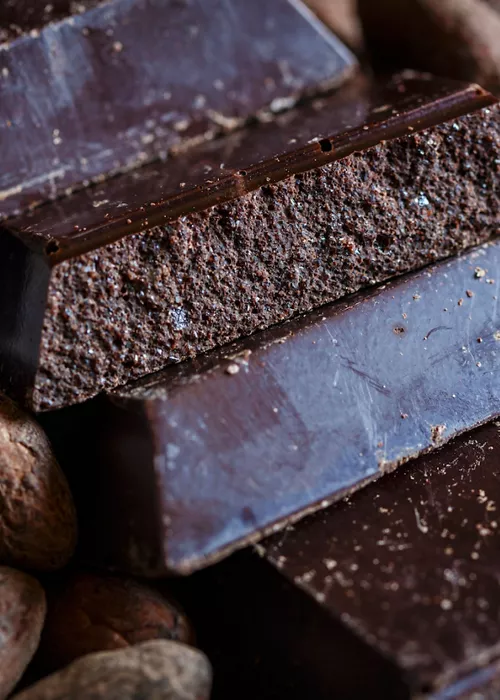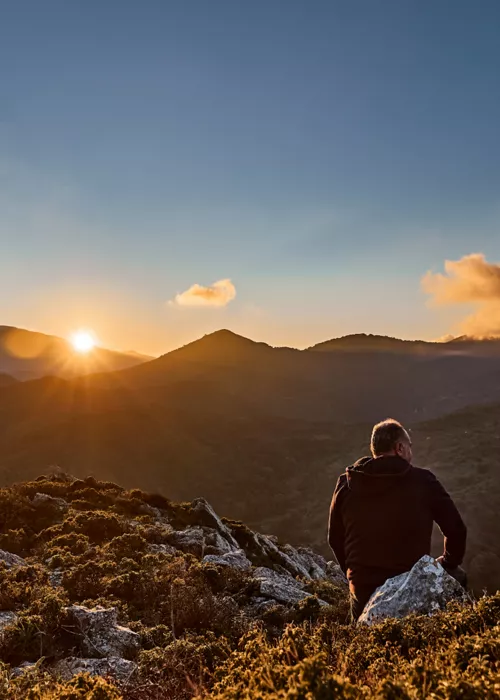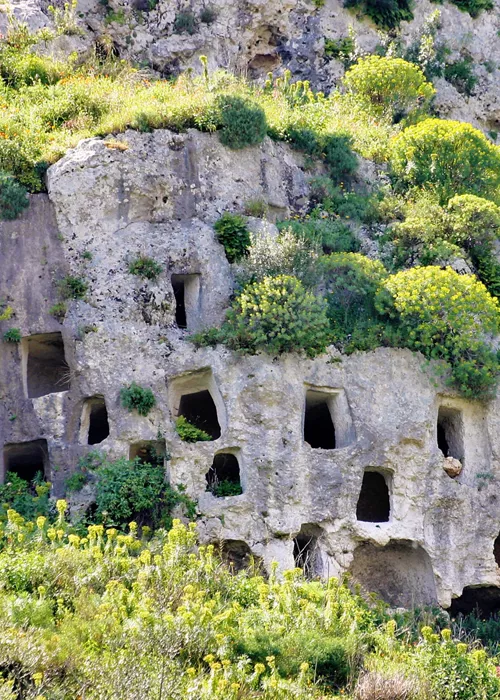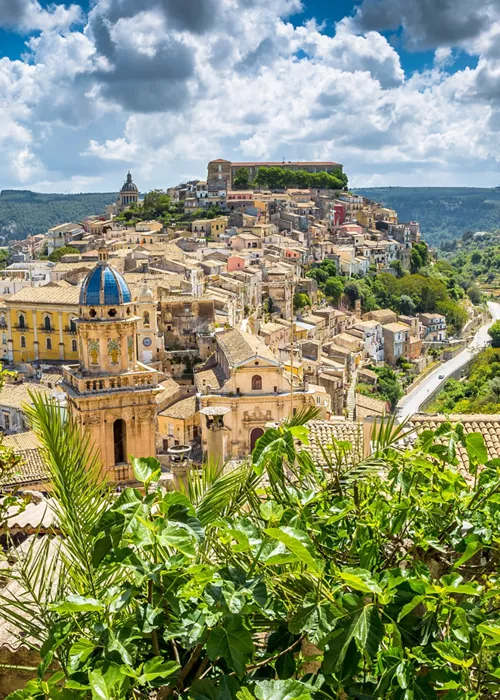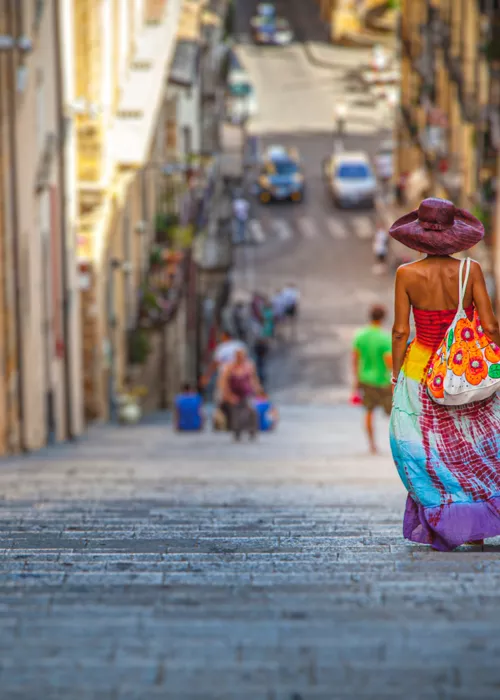From Realmonte to Piazza Armerina. On the saddle from the sea to the inland rich in art and history
3 minutes
A good 171 kilometres, with 2,530 metres of total elevation gain – this is the identikit of the third stage of the Giro di Sicilia 2023 Credite Agricole, a route that from the fine sandstone of the southern coast plunges into an inland that smells of almonds and olives. But there is much more to find out along this route, especially for lovers of history and art. Here, then, are the main attractions for those who want to retrace the exploits of the pro riders and at the same time also enjoy the beauty of the surroundings.
Realmonte and Porto Empedocle: nature and legend
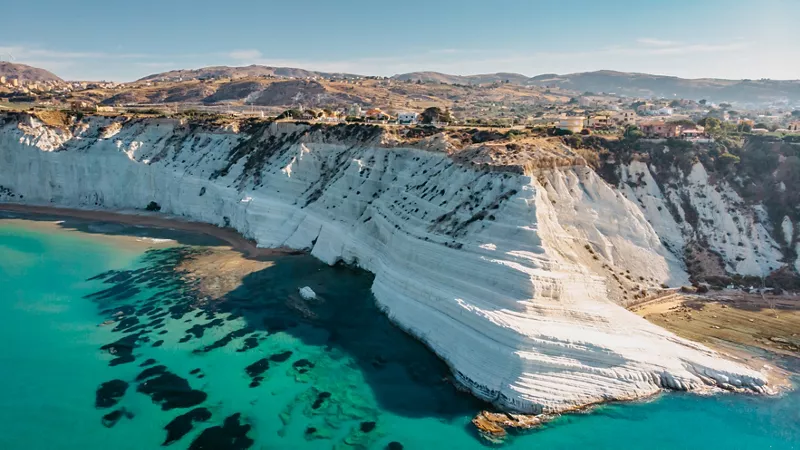
The start is from the village of Realmonte, in the province of Agrigento. To those unfamiliar with southern Sicily, it might seem like an unknown spot on the map. In fact, about 3 kilometres away is a natural attraction that the whole world is envious of: the Scala dei Turchi. It is a marlestone cliff, a sedimentary rock of a calcareous and clayey nature, whose blinding white contrasts with the blue of the sea. Its name is thought to derive from 16th-century pirate raids, when it was often stormed by pirates. Since February 2020, due to the risk of landslides, it has been a protected area that can only be admired from the beach below. But the prohibition seems to be running out of time. In fact, the authorities are working to reopen this natural amphitheatre of extraordinary beauty to tourists as soon as possible. A few kilometres along the coast and you reach Porto Empedocle, the birthplace of Andrea Camilleri, the creative "father" of Commissioner Montalbano: some of the policeman's stories were set here, in an imaginary village called Vigata, which also appears on some road signs.
In Naro, a castle in the clouds
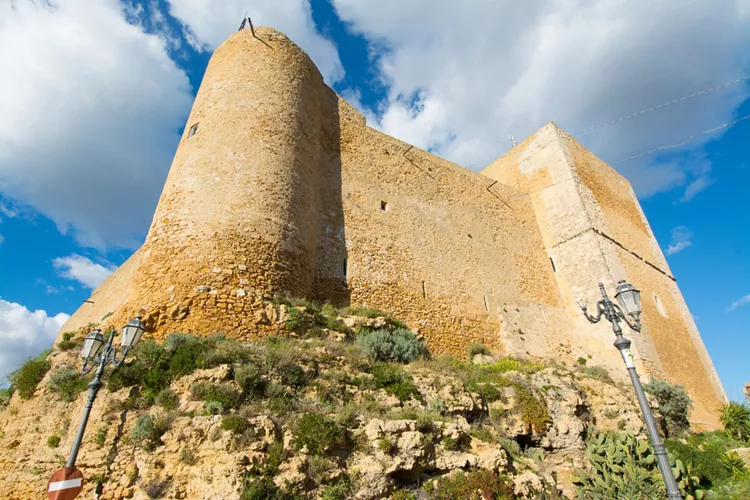
The first difficulty of the route is the ascent that leads to the medieval village of Naro, at 467 metres above sea level, with a 15% gradient: an effort immediately repaid by the view, which stretches from the hill to the Madonie Park and Etna. From this village made of narrow streets, staircases, magnificent civil and religious buildings, Greeks, Carthaginians, Arabs and Normans have passed in ancient times. On the other hand, the 14th century saw the arrival of the powerful Chiaramonte family, who built the castle of the same name on the ruins of an Arab fort: the mighty walls, the towers and the keep overlook the town and are worth the ticket. The same applies to the 11th-century Norman Cathedral and the Chiesa Madre, once a Jesuit College. The itinerary continues through fertile countryside, expanses of almond trees and hills of Mediterranean scrub that impose continuous ups and downs on professionals and amateurs alike. You pass through Canicattì, one of the very few towns on the route, where the roads become narrower, which require an amount of caution.
From Caltagirone to Piazza Armerina, between art and architecture
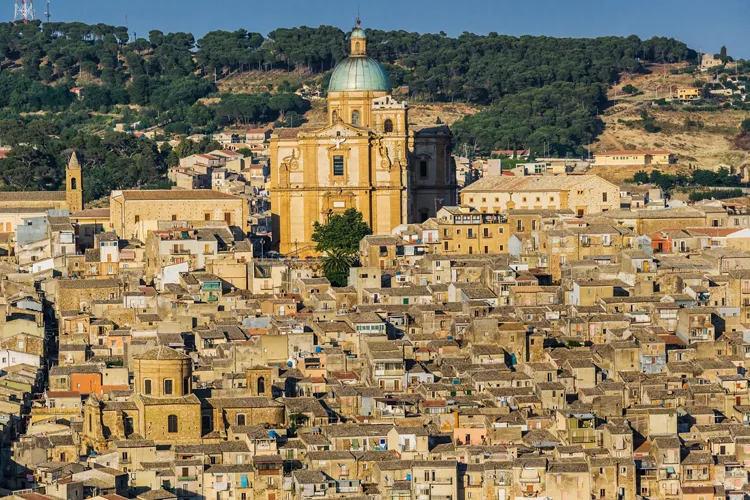
Arriving in Caltagirone will delight those who, besides cycling, love art, crafts (it is very famous for ceramics) and architecture: its historic centre, in fact, was entirely rebuilt after the 1693 earthquake and since 2002 has been part of the UNESCO site of Val di Noto, for its Baroque artistic heritage. You can expect sumptuous palaces, impressive staircases and beautifully decorated buildings, like the Church of Santa Maria del Monte or the Monte delle Prestanze. After a 3-kilometre climb at an average gradient of 5%, you arrive at the finish in Piazza Armerina the village in the province of Enna nestled on a cliff at an altitude of 700 metres. Not far away is a must-see that leaves no room for exceptions: the Villa Romana del Casale, a lavish residence of late imperial Rome, which has been a UNESCO site since 1997. A treasure of 3,500 square metres with mosaics, created by craftsmen specially flown in from Africa: 62 rooms, in which the floors are embellished with millions of tiles, depicting scenes of everyday life, hunting and games, heroes and gods.
Curated by the editorial staff of RCS Sport.

